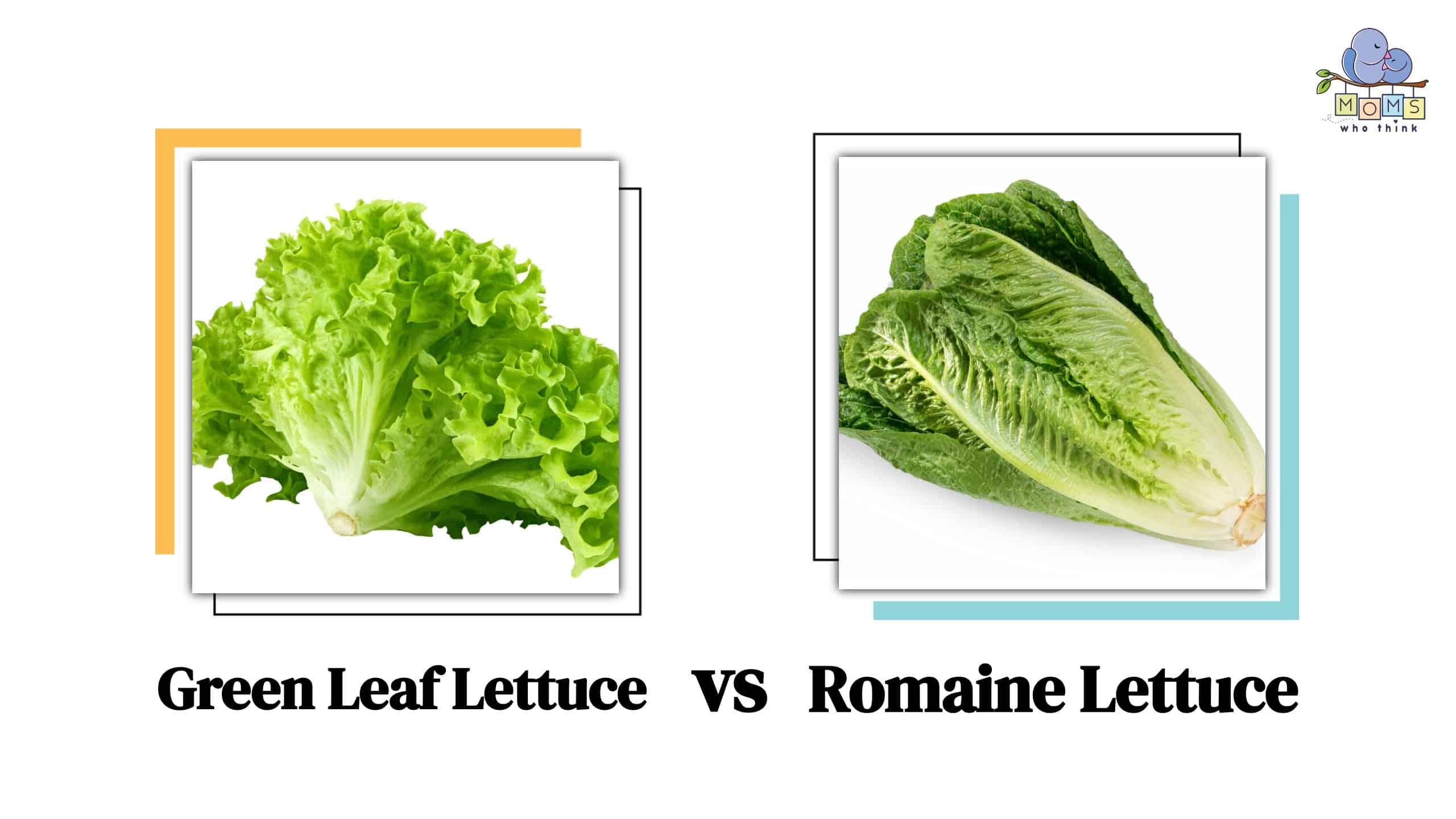Lettuce can be an excellent source of essential nutrients and vitamins. Many enjoy adding it to their salads or eating it on their sandwiches. If you love a good salad or want to know the difference between green leaf lettuce and romaine, this article will explain exactly what those differences are!
The main difference between the two all comes down to appearance. Green leaf lettuce is a lighter green, almost lime, while romaine is dark green. Also, romaine lettuce has a head that grows in a tight bunch. It is a long oval shape.
At the same time, the green leaf lettuce head is spread out. The leaves are loose and take the shape of a complete flower in bloom. Although these are the main differences, there are a few more that we will talk about below!
- The must-have convenient reference guide for every home cook!
- Includes more than 8,000 substitutions for ingredients, cookware, and techniques.
- Save time and money on by avoiding trips to grab that "missing" ingredient you don't really need.
Green Leaf Lettuce vs. Romaine: The Main Differences
Aside from the apparent difference in appearance, green leaf lettuce and romaine lettuce also have ribbing differences.
Romaine lettuce has a ribbing that goes from the top of the leaf to the bottom. It is a white-yellow color. Since the ribbing extends the complete length, romaine lettuce is very crunchy.
On the other hand, green leaf lettuce has a ribbing that does not travel the entire length of the leaf. Instead, it only goes to the middle. Therefore green leaf lettuce tends to be less crunchy than romaine.
Nutritional Profile
Let's look at the nutrition between green leaf lettuce and romaine. For starters, all lettuce is going to be pretty nutritious for you. This is one reason salads are an excellent additive for meals. They give us many vitamins and minerals we may not realize we are missing. For example, green leaf lettuce and romaine contain vitamins K, A, lutein, and zeaxanthin. While romaine also carries folate.
If you want to focus on eye or immune health, lutein, and zeaxanthin are both antioxidants. The vitamins A, K, and folate are also great for eye health!
They are relatively low in calories, and their carbohydrates are also low. Look below at the comparison chart to see which offers more benefits.
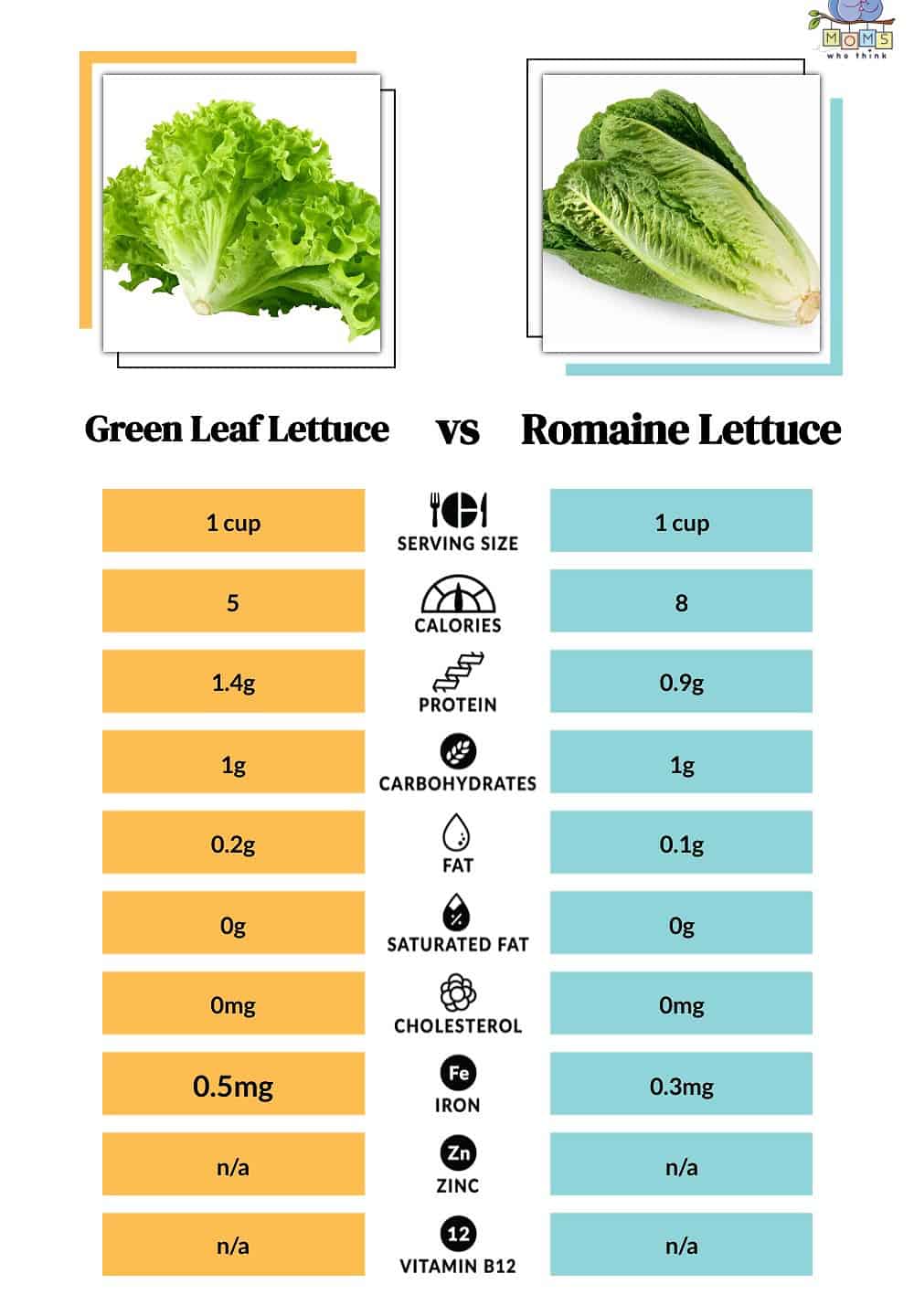
©
Texture and Taste
Green leaf lettuce and romaine also vary in texture and taste. Romaine lettuce has more of a bitter yet mild flavor. It is crunchy and firm, making it great for grilling! Romaine is a superb choice if you prefer a more bitter and snappy taste.
Green leaf lettuce, on the other hand, is not as firm as romaine lettuce. However, it still has a bit of a crunch. It tends to be a tad sweeter and milder than romaine lettuce. Green leaf lettuce is a good option if you like mild lettuce in your salad.
What is Green Leaf Lettuce?
Green leaf lettuce is a green plant that many people enjoy in salads or sandwiches. It is grown in the ground and can be pretty hardy when the conditions are right.
The stem is narrow and long. From there, the lettuce head fans out to create a lettuce head that more closely resembles a rose in bloom. The lettuce leaves are also curly on the ends, making the greens appealing to the eye.
Green leaf lettuce is light green, with a soft, crisp texture and sweet, mild flavor.
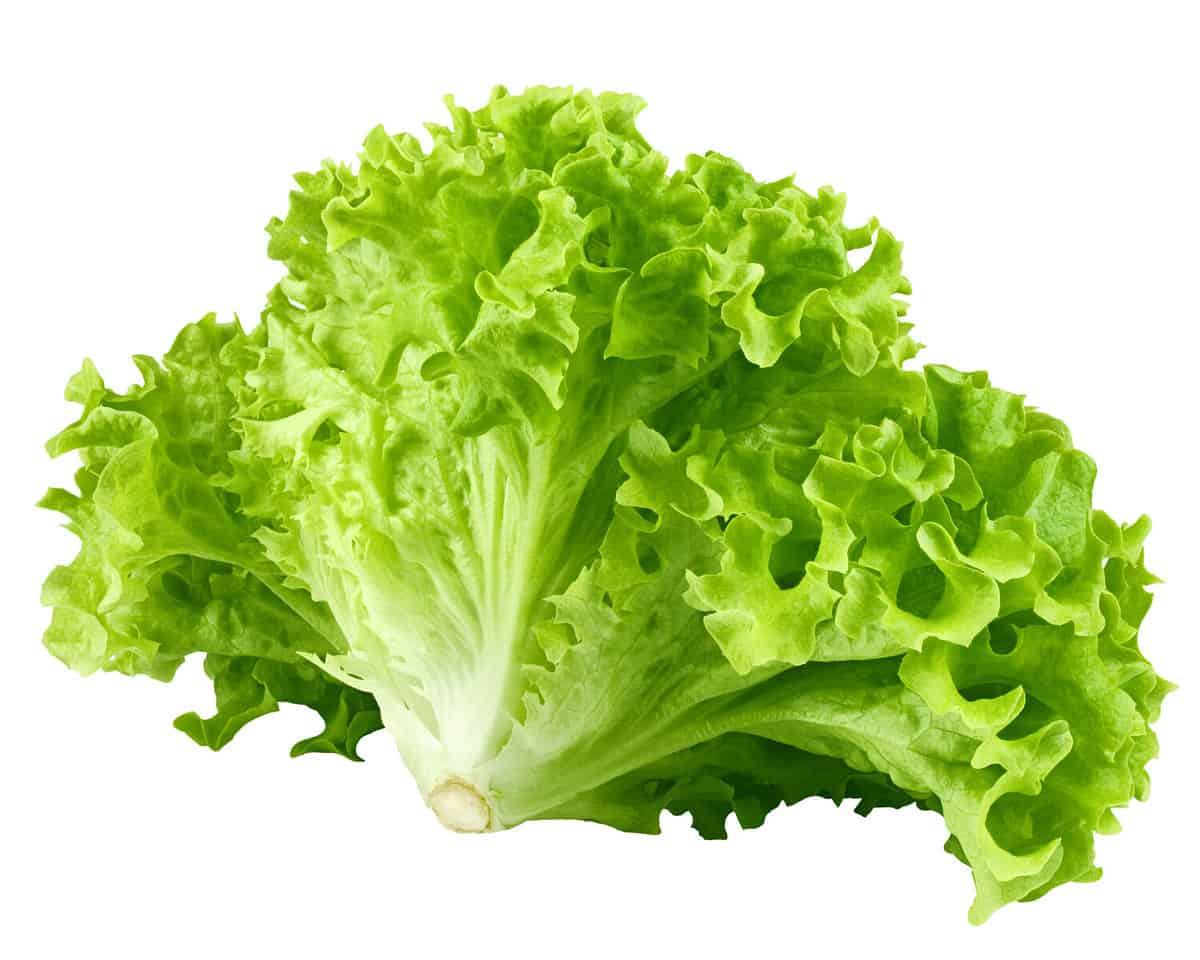
©grey_and/Shutterstock.com
What is Romaine?
Romaine lettuce is a dark green plant. It also has a narrow and long stem. However, unlike the green leaf lettuce, the romaine leaves grow in a bunch. The bunch can reach up to 15 inches long and is an oval shape.
Romaine lettuce is crunchy and has a bit of a bitter taste. The leaves on romaine lettuce also tend to be drier than green leaf lettuce.
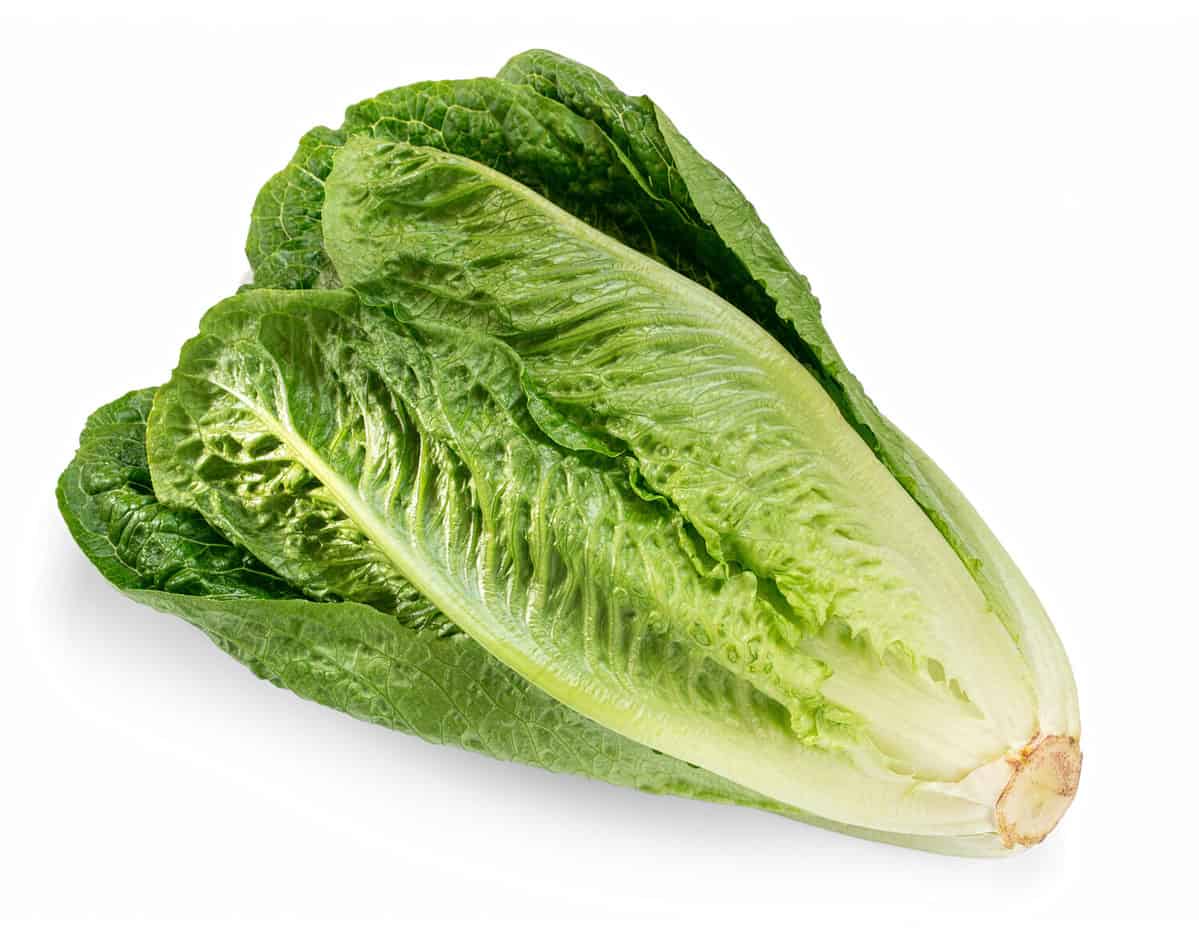
©Mongolka/Shutterstock.com
Benefits of Eating Lettuce
There are many benefits to eating greens. Many people love them, and others can't stand them. Sometimes people eat them to add some health to their diet. Additionally, moms everywhere look for ways to convince their littles to consume more of these vitamin-packed plants.
Regardless of why you eat or don't eat lettuce, you cannot deny that the health benefits are worth it!
One of the main benefits of eating lettuce is all the great vitamins your body takes in. One of the main vitamins is vitamin K. This is an excellent vitamin for your bones. If you are a mom trying to get her little one to eat more lettuce, you can tell them it will help their bones become stronger!
Lettuce is also around 95% water. Yes, this number is hard to fathom, but it's true! If you want to become more hydrated, lettuce can help you with that.
Lettuce is also low in calories, making it a perfect option for those who want to live healthier.
Lettuce can also protect against certain diseases because it contains antioxidants.
- The must-have convenient reference guide for every home cook!
- Includes more than 8,000 substitutions for ingredients, cookware, and techniques.
- Save time and money on by avoiding trips to grab that "missing" ingredient you don't really need.
Possible Downfalls of Lettuce
One thing to keep an eye out for when eating lettuce is contamination. Although lettuce is relatively safe to eat, some recalls have happened recently because of E. coli.
Also, sometimes lettuce is sprayed with pesticides. It's essential to wash your lettuce before you eat it every time.
History of Lettuce
Have you ever wondered about the history of lettuce? It can be easy to eat our food and never inquire about how it got here! Lettuce has been around for centuries.
The first people to cultivate lettuce were the Egyptians. One interesting fact, the Egyptians connected lettuce with the god of fertility Min.
Later on, lettuce became popular in Rome and Greece, and China. Lettuce has been around for thousands of years, offering its benefits and growing in popularity.
How to Help Your Kids Eat More Lettuce
It can take a lot of work to get children to eat lettuce. After all, it's green and not sweet. It can be boring. Here are some excellent ideas that can help you introduce the wonderful benefits of lettuce to your children.
- Try making green eggs by adding delicious greens before scrambling them! Puree the lettuce or spinach of choice in a blender along with your eggs. Now you are good to go! Some kids love the green color of the eggs, others not so much. However, it is worth a try.
- Involve your child in the preparation process. Some kids are more likely to eat something they make themselves.
- Add fruit to your salad. Fruit is colorful and has a natural sweet appeal.
- Create a salad bar. Lay out various ingredients for your child to make their own salad. Be sure to offer some of their favorites! The only requirement, the base must be green.
- Add greens to a shake. Eating a fruit smoothie or a protein shake may help get those essential nutrients in! Often, you can't even taste the greens after it is blended, let alone see them.
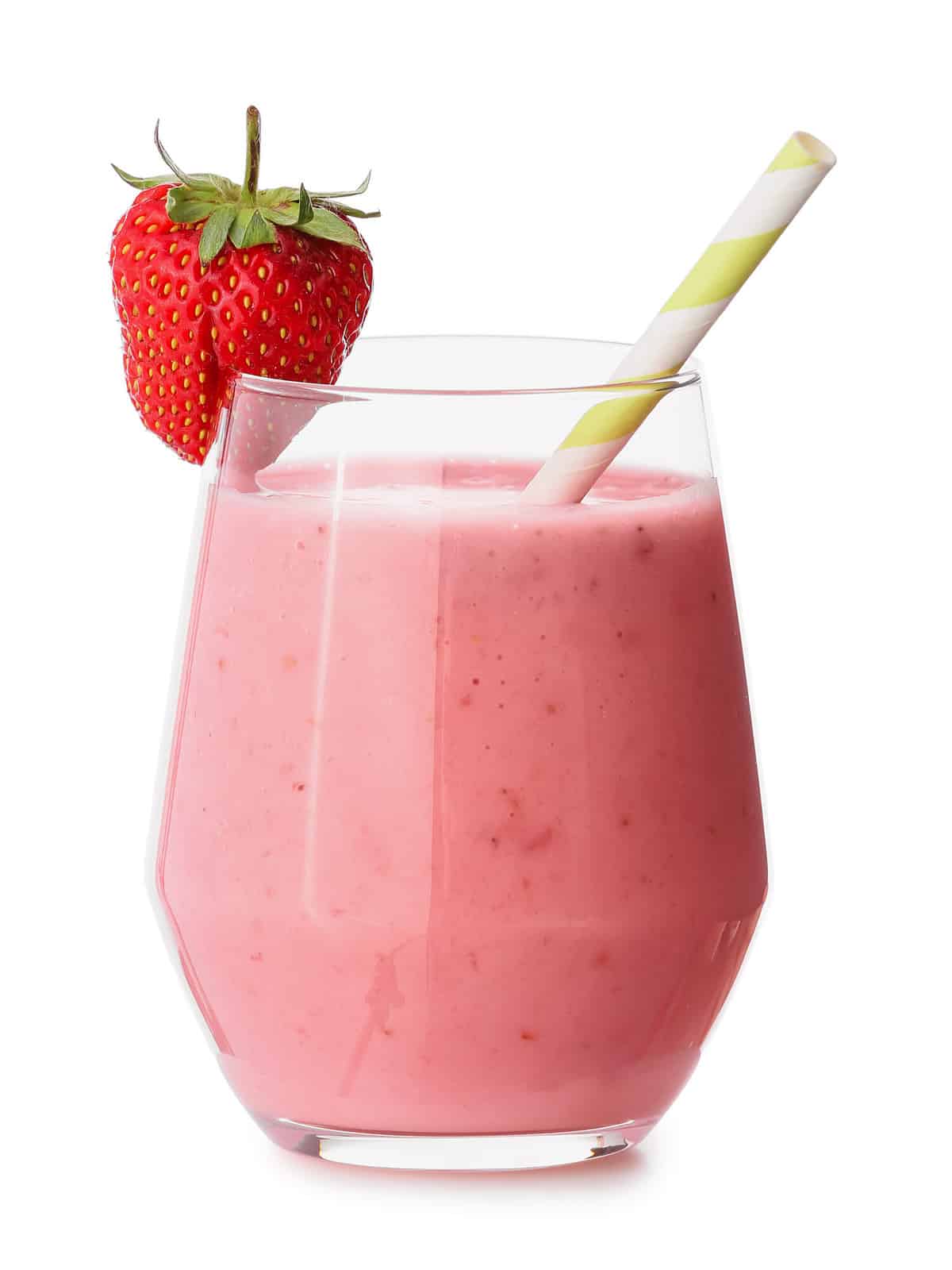
©Pixel-Shot/Shutterstock.com
In Conclusion
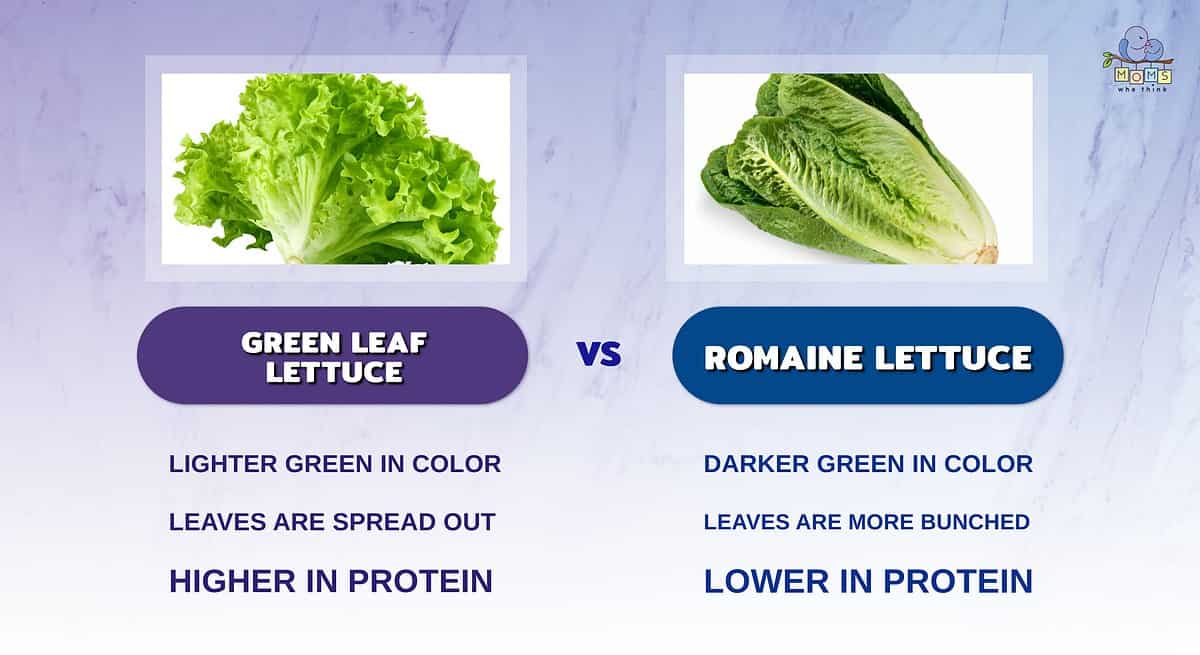
- Green leaf lettuce and romaine are both green, but romaine is darker in color than green leaf. This can make it easier to tell them apart.
- The leaves on green leaf lettuce are spread out, while they're bunched together on a head of romaine lettuce. This is another key way to tell these two types of lettuce apart.
- Neither green leaf nor romaine are particularly high in protein, but green leaf has more than romaine. This makes it a great choice for those looking to get as much protein as possible in their diet.
When it comes to lettuce, there is no denying that there are many benefits that come from eating it. However, with all the different choices on the market, it can take time to decide which is best. In regards to health benefits, all lettuce offers some. The taste and texture will also vary between lettuces.
Romaine lettuce is crunchy and has a crispier texture than green leaf lettuce. It is perfect for those who love the snap of greens in their salads. However, it does have a more bitter taste. On the other hand, green leaf lettuce tends to be sweeter with a softer and mild flavor.
When eating lettuce, you are promoting many health benefits! Your eyes, sleep, heart, immune system, and more will thank you for offering many excellent nutrients and vitamins and keeping them in tip-top shape!
Take a look at this recipe that uses romaine lettuce:
Print
Turkey Cobb Roll Ups
- Yield: Serves 4
Ingredients
2 cups shredded romaine lettuce
1 medium tomato, seeded and chopped
2 green onions, chopped
3 tablespoons blue cheese-flavored yogurt dressing
1/2 teaspoon freshly ground black pepper
8 ounces thinly sliced roast turkey, chopped
1 avocado, diced
4 10-inch spinach tortillas
Instructions
1. Combine first 7 ingredients in a medium bowl.
2. Spoon turkey mixture evenly onto tortillas; roll up.
Nutrition
- Serving Size: Per serving
- Calories: 301
- Sodium: 381mg
- Fat: 13g
- Saturated Fat: 3g
- Carbohydrates: 25g
- Fiber: 12g
- Protein: 29g
- Cholesterol: 53mg
Comparison Posts
- Rice Vinegar vs. Rice Wine: How They're Made and Most Common Uses
- Corn Oil vs. Olive Oil: Taste Differences, Creation Processes, and Nutritional Profiles!
- Crescent Rolls vs. Croissants: The Subtle Difference Between The Two
- Lentils vs. Chickpeas: What's the Difference?
- Scorpion Pepper vs. Carolina Reaper: Heat Units, Flavor Differences, And Popular Uses!
